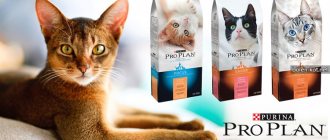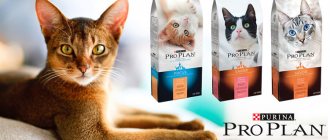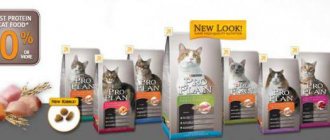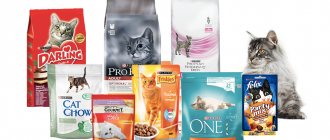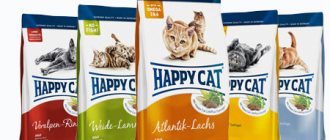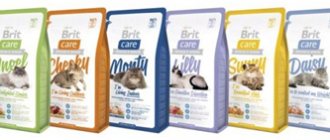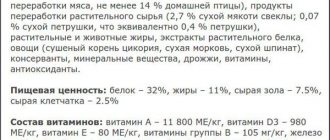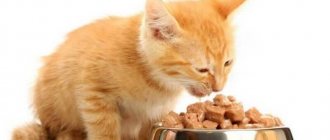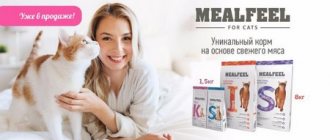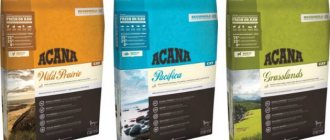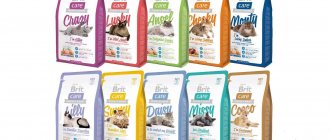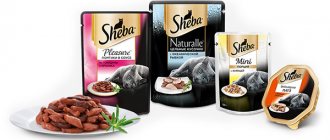Caring owners try to give their pets the best, and this naturally applies to food. In order for a pet to grow active and healthy, it needs to be provided with a complete diet, taking into account the characteristics of its breed or age. As the main food, you can choose a finished product, for example, Purina cat food. Reviews from veterinarians and consumers indicate that this brand deserves great attention. Therefore, in this article we will try to understand what kind of food this is and why it has so many positive reviews.
Manufacturer
The manufacturer of Purina One is the American company Nestle Purina PetCare Company. The history of this brand dates back to 1829: the company’s founder, Joel Spiller, first traded grain, then built the second steam mill in the UK, and a little later, having organized the first joint-stock company, began producing specialized food for animals. Initially food was produced exclusively for dogs, but in the 1950s. a version of soft canned food for cats was developed. The Spillers Nutrition Center and a unit to study feeding and behavior in domestic animals were created.
A lot of specialists are involved in the work: veterinarians, zoopsychologists, nutritionists. All products undergo strict veterinary control and are safe for consumption not only by animals, but also by humans.
Who produces food under the Purina brand?
]Purina[/anchor] today unites three companies known as manufacturers of pet products: PURINA, Spillers and Friskies. These firms became the founders of the pet food industry. The first dog treats were produced in 1856 by Spiller and Co. Robinson-Danforth (the ancestor of PURINA) began producing the first animal products in 1894. The Carnation Corporation (predecessor of Friskies) opened the Canine Nutrition Research Center in 1920.
The development of these firms has a long history, but the final merger occurred in 1998, resulting in the creation of one of the world's largest pet food companies. Since 2001, it has been called Nestle Purina Pet Care. This company not only produces food, but also actively influences the lives of pets: it sponsors the “Pets for You” charity program to work with homeless animals, it opened the world’s first Dog DNA Distribution Center and created the largest Event Center in which hosts international cat and dog exhibitions.
What brands are produced under the Purina brand?
Extensive experience in creating animal feed allows the company to offer a diverse range of its products. Cat food is represented by a number of well-known brands, each of which is popular in the modern market.
Photo gallery: cat food brands produced by
Felix food is an inexpensive food, presented in the form of jelly and sauces of various flavors.
Inexpensive dry and wet food, has a line of products for cats of different ages and living conditions
Purina One - dry and wet food for cats of different ages, including a medicinal variety; characterized by high protein content
Darling food is inexpensive and contains omega fatty acids.
Gourmet food is offered only in wet form and is packaged for one serving
ProPlan food is a high-quality food, contains only easily digestible ingredients and has a good taste.
presents a line of therapeutic food for cats
Premium food "Cat Chow" is presented in dry form for cats of different ages and contains a lot of protein.
Range
Now let's look at the Purina One range (Purina Van). It's wide enough.
2 options for kittens: with chicken and carrots (wet), and with chicken and whole grains (dry). Fiber in the composition improves the health of the digestive system, protein promotes the development of muscles and skeletal bones. The composition contains amino acids, minerals and vitamins. Babies aged 6 to 12 weeks can be fed 1-4 bags of wet food per day, older kittens (up to 52 weeks) - up to 6 bags.
For adults (up to 11 years of age), the following options are offered:
Canned food: with beef and carrots; with chicken and carrots (for sensitive digestion and for animals that are not allowed outside the house); with chicken and green beans (for spayed and neutered individuals).
Dry:
- high in chicken content;
- with a high beef content (for castrated and sterilized);
- high in chicken and whole grains;
- high in beef and whole grains;
- with turkey and rice (for gentle digestion);
- with turkey and grains;
- with salmon and wheat (for a capricious stomach);
- with beef and wheat (for cats that have undergone sterilization);
- with chicken meat and whole grains (to remove excess hair from the stomach and maintain a beautiful coat);
- with Actilea formula (on three components: prebiotics, yeast and antioxidants to improve immunity).
Do not give cold or hot food to animals. Canned food from the refrigerator must be heated, but the food should not burn the cat’s mouth. Keep an eye on that. so that the drinking bowl is always filled with clean, fresh water (purified using a household filter or distilled).
For cats over 11 years of age, only one option is offered: dry granules with a high Omega-6 content, a double immune protection formula, and an optimal balance of proteins and fats.
conclusions
Purina is a cat food that differs from other brands in its huge range. It has several lines of feed, which, in turn, are divided into several more directions. The composition of each food is designed according to the age of the cat and its needs.
Purina is notable for the fact that it has its own therapeutic line, which has proven itself to be effective. Many veterinarians prescribe it for urinary tract diseases. It costs quite a lot.
The worst reviews are most often found about the Darling and Friskies lines. These are the most budget options. They contain many dyes and various preservatives that are harmful to the cat's health.
Compound
Components of Purina One (Purina Van):
- meat and meat ingredients (chicken, beef, poultry);
- fish and processed fish products;
- wheat, soy flour, corn, wheat and corn gluten;
- animal, fish and chicken fat;
- vegetable protein extracts;
- dried chicory root, dried beet pulp, carrots, beans;
- natural flavoring additive;
- yeast;
- antioxidants, minerals, vitamins, preservatives.
General information
engaged in packaging imported food. To assess the effectiveness of the food on the body, the consumer is asked to observe the pet for 3 weeks. According to the manufacturers, during the first seven days the cat will happily eat the Purina Van food offered. During the second week, the cat’s digestion normalizes. Feces become shaped, the sharp unpleasant odor disappears. At the end of the second decade, the pet has shiny fur and shining eyes. The veracity of the claims made by food manufacturers is not difficult to verify.
Changes in 3 weeks
Advantages and disadvantages
- Purina One food (Purina Van) is popular and is sold not only in specialized stores with goods for cats, but also in many supermarkets.
- This food is inexpensive and can be purchased on an ongoing basis by many members of the middle class.
- It contains meat and fish products, vegetables, and a vitamin and mineral complex.
- Sugar is found in wet canned food: not only in packages for adults, but also for children. This is not just an undesirable, but a harmful component: it contains a lot of calories, but no minerals or vitamins. Added to enhance taste.
- Components not specified. For example, wet kitten food uses a thickener, but what kind is unknown. There is no information not only on the package, but also on the website. Also, the fats, oils, processed plant products, and antioxidants used are not indicated. The official website says that the flavors and antioxidants used comply with the requirements of Russian legislation and are safe for animals, but why there are no names on the packages is a mystery.
- The proportions are not specified: the packs only list the components, and how much of this or that ingredient is added is a closely guarded secret.
- It contains vegetable protein, which is much less digestible than animal protein, as well as corn and wheat (and they are not good for animals).
- There is meat and fish, but there is little of it, firstly, and secondly, the quality of the raw materials is low. Vague formulations like “processed products” and “dry protein” do not inspire confidence.
- There are very few minerals and vitamins.
Purina One food contains a certain amount of dyes: small, as the manufacturer assures, and is approved for use not only in the Russian Federation, but also in EU countries.
Get acquainted with interesting cat breeds with the help of our encyclopedia: Scottish Straight, Balinese, LaPerm.
What other brands does the brand produce?
The company is constantly expanding, creating more and more new jobs.
Few people know, but Purina owns many other brands that produce pet food, such as:
- Felix
- Friskies
- Darlino
Where to buy
As mentioned above, the brand of this food is widely represented in virtually all supermarkets in the country. However, in regular stores you can only buy classic lines for kittens and adult cats; food for sterilized cats and for improving the functioning of the gastrointestinal tract can rarely be found. Supermarkets offer both liquid and dry food from this brand.
It is worth noting that the cost of this food in supermarkets and specialty stores varies slightly.
First of all, because in specialty stores the storage conditions for pet food rations are carefully observed, while in supermarkets this is not monitored, and the food may well be spoiled.
In addition, there are significantly more variations of diets, which allows you to diversify your pet’s diet, as well as get advice from a sales consultant on the correct feeding of a specific type of food.
- The cost of a package of dry food in 200 g costs 90 rubles, in 750 g it costs 270 rubles, in 1.5 kg it costs 440 rubles.
- Bags of liquid food in 75 g cost from 30 to 40 rubles per piece.
Recommendations
On each package of food from this brand, on the back side is written the recommended dosage for different categories of pets. This recommendation must be followed to avoid overfeeding. However, if there are recommendations from a veterinarian, you should only follow them.
If you notice a change in your pet's behavior after starting to feed this brand, you should temporarily exclude it from the diet, because some breeds may react negatively to this brand of food.
